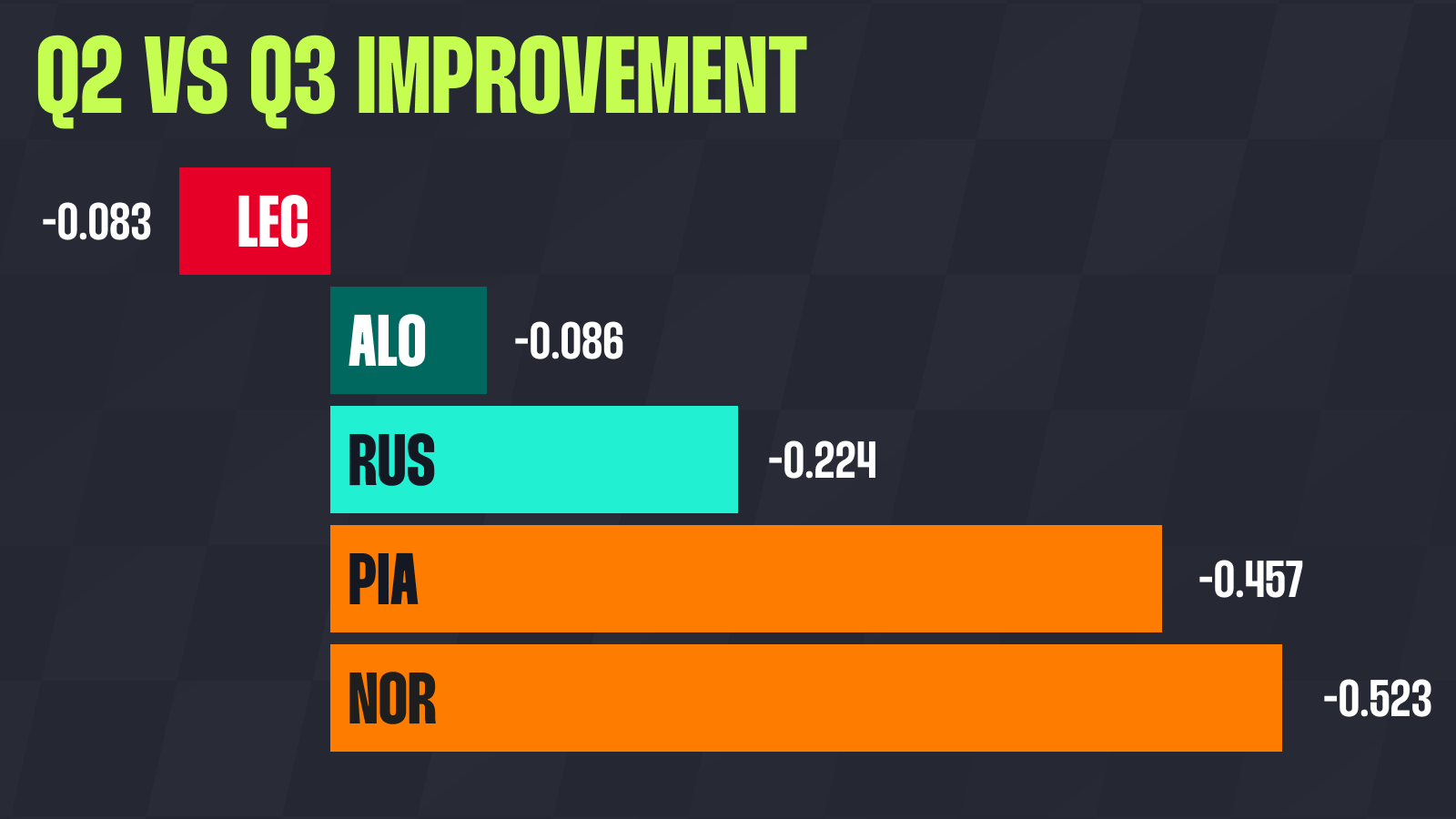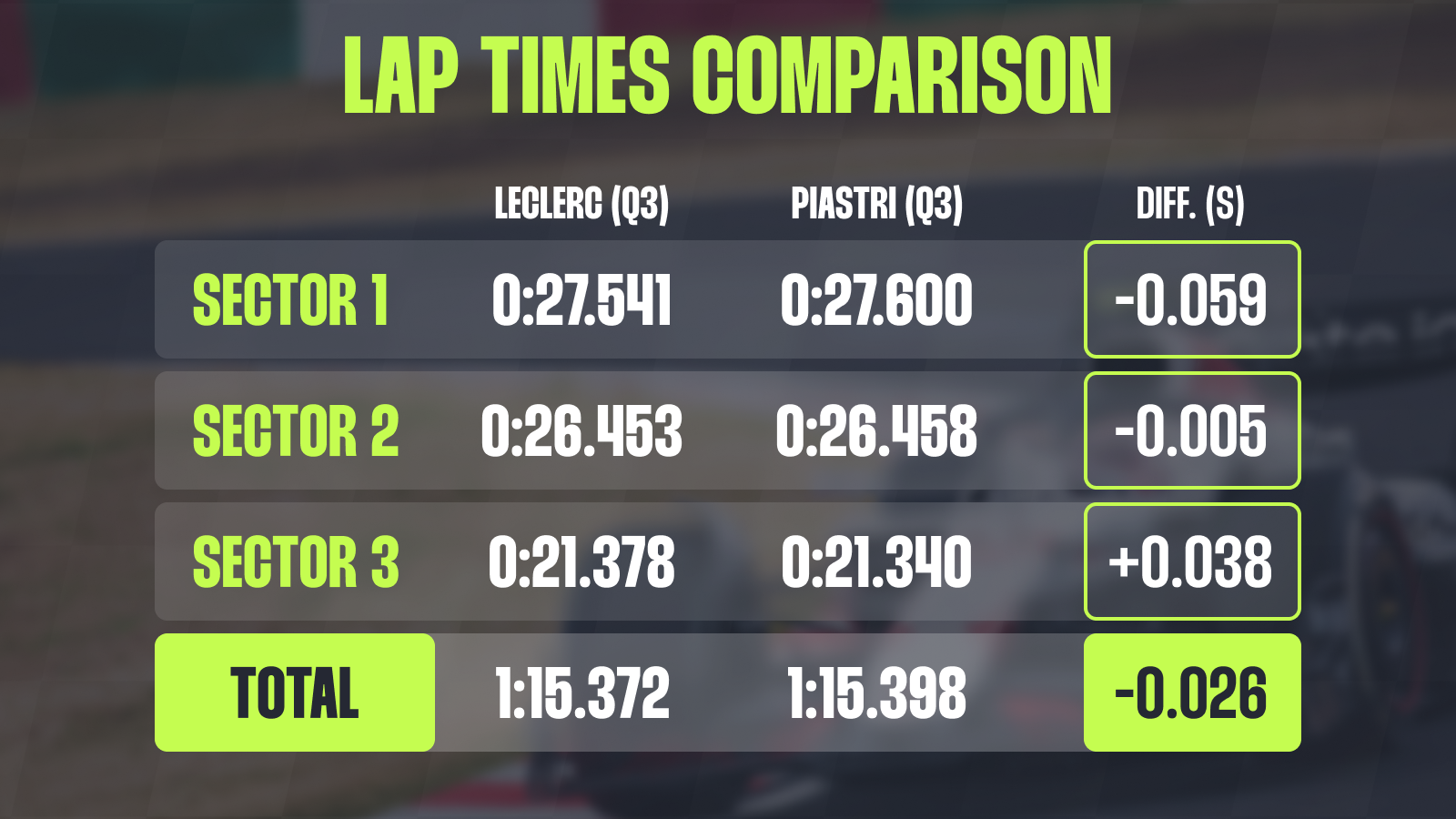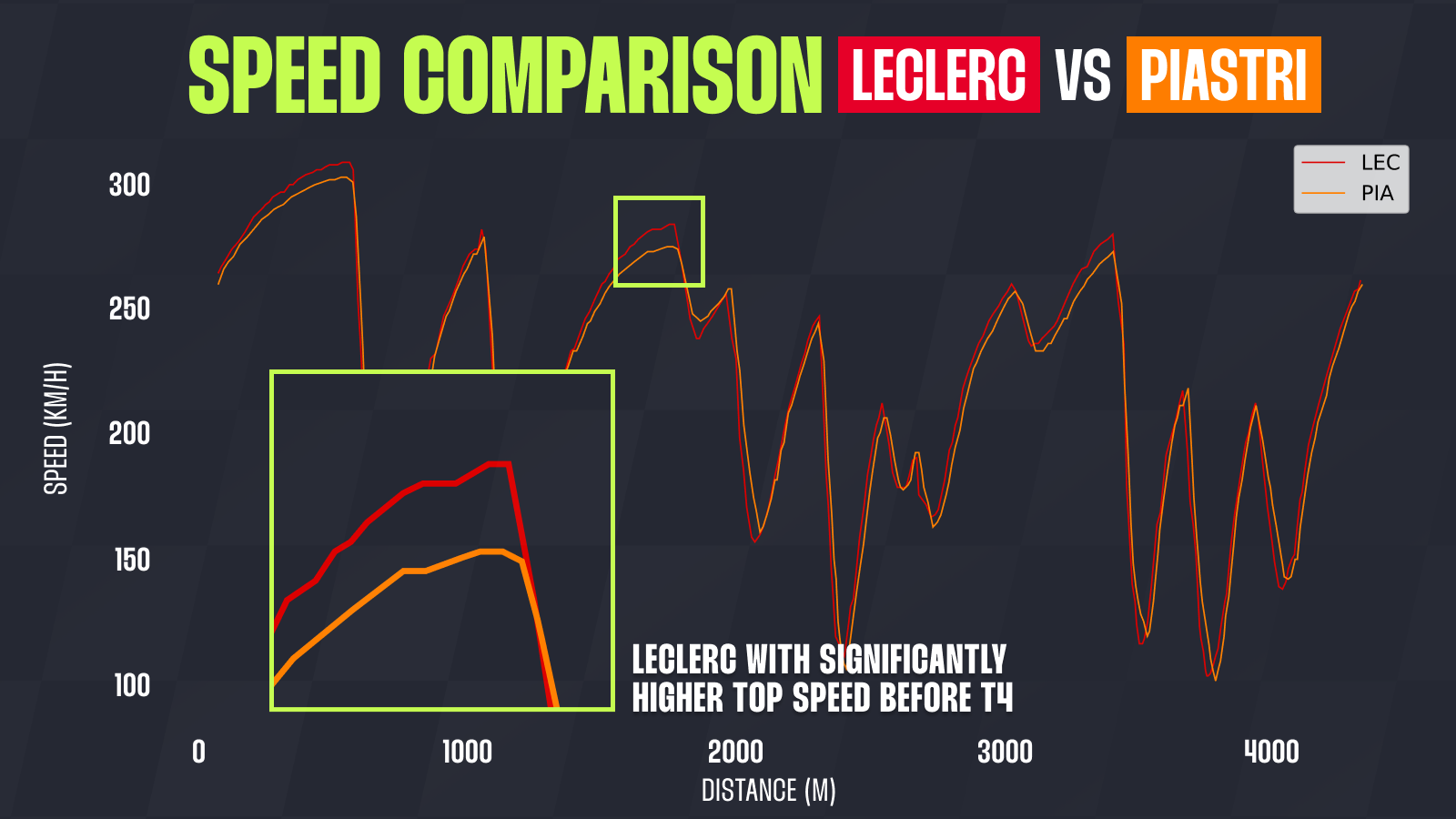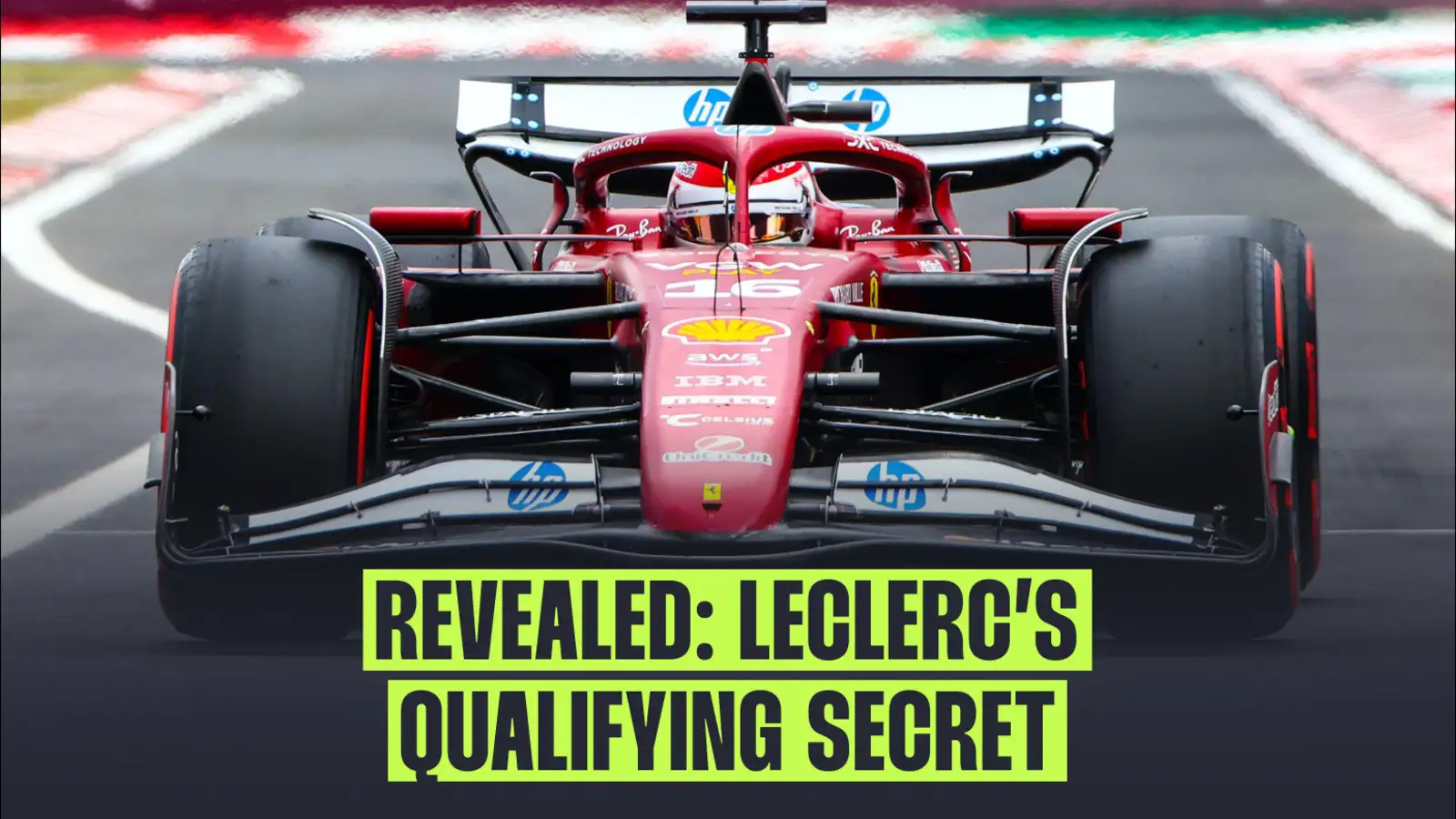Qualifying in Hungary brought a huge surprise, with Charles Leclerc securing pole position despite McLaren dominating all three practice sessions.
The Ferrari driver capitalised on the changing track conditions and, at a time when everyone was struggling for grip, delivered a phenomenal lap.
Analysis of Charles Leclerc’s Most Unexpected Pole Position
After a not-so-impressive first half of the season, Ferrari has stepped up its game — both in qualifying and in race pace. The issues with rear-end instability are gradually diminishing, and the recent upgrades introduced in Belgium seem to have paid off.
While the impact wasn’t immediately visible — especially considering Hamilton’s poor performance in Spa — it appears that the engineers have done a solid job and used their track time wisely, both during filming in Italy and free practice in Hungary.
Progress was already evident in FP1, and the more track time it had, the clearer it became that Ferrari was set to become the second-strongest team, effectively replacing Red Bull and Verstappen in that role.
Even though the SF-25 is still significantly slower compared to the MCL39, what made the difference in qualifying was Leclerc’s superior handling of variable conditions on track; At the start of Q2, we even saw a few drops of rain, which — fortunately for Leclerc — didn’t lead to any serious disruption. Ferrari had opted for a lower-downforce rear wing spec this weekend, and a wet track was the last thing they wanted.
Later in Q2, the biggest surprise came with Lewis Hamilton’s elimination. But in truth, both Ferrari drivers struggled to make it out of Q2.
Once through into qualifying’s final phase, changing track temperature and increasing wind meant timing was the most crucial factor of the segment.
Interestingly, Leclerc was the only driver who improved his lap time in Q3 compared to Q2 — everyone else was slower.

Ultimately, that effort put him on pole by just 0.026 seconds ahead of second-placed Piastri and 0.041 seconds ahead of Norris in third. Almost all of the top five drivers were within a tenth of a second in an incredibly thrilling qualifying session in Hungary.
Let’s take a look at where Leclerc found the crucial edge over the McLaren drivers.


The first thing that stands out is the difference in top speed on the main straight, in the second DRS zone before Turn 2, and especially on the short straight between Turns 3 and 4. In fact, the difference on this last stretch was the most significant.
Leclerc was able to gain at least 0.06 seconds per straight on his fastest lap. On another track, this might seem minimal — but on the short Hungaroring layout and in variable conditions, such advantages are massive.
Two factors helped Leclerc reach higher speeds: first, the less loaded rear wing, and second, greater electrical energy deployment.
Before Turn 4, Leclerc had a lead of around one-tenth, but through the faster Turn 4 and into Turn 5, McLaren’s advantages began to show. By the time they reached Turn 6, it was Piastri who held an advantage of about one-tenth.
Onboard footage shows just how aggressive Leclerc was over the curb at Turn 7 — probably the most aggressive of any driver on the grid. Piastri wasn’t able to match that, and from that point onward, the advantage swung back in Ferrari’s favour.
More Hungarian GP talking points from PlanetF1.com
👉 Revealed: The new parts added to Red Bull’s attacking arsenal
👉 How Williams are looking to stay one step ahead with new FW47 updates
If you have a stronger exit through Turns 6 and 7 in Hungary, you’re in a much better position for the remainder of Sector 2 — and that’s exactly what happened with Leclerc. He managed to reclaim the advantage, and despite a weaker final three corners, the gap was enough for the Monegasque driver to claim another pole position.
As seen during the practice sessions, McLaren excels at preserving tyre grip throughout a flying lap, especially in the final three corners. While most teams had already extracted all available grip from their C5 Pirellis, McLaren still had reserves.
When we compare Norris’s and Leclerc’s fastest Q3 laps, we see a very similar pattern — the delta line moves almost identically. The section where Norris underperformed compared to his team-mate was precisely those final three corners, which is why he’ll start Sunday’s race from P3.
Can Charles Leclerc Win the Hungarian Grand Prix?
Pole position only truly matters if the driver can convert it into a win on race day. In the first part of the 2025 season, we’ve seen that pole is more valuable than in previous years — and having clean air makes a huge difference.
That effect will likely be even greater in Hungary. The hot track temperatures make it even harder to cool the brakes and the power unit, while also maintaining optimal tyre temperatures. In this area, McLaren is clearly the strongest.
Leclerc will undoubtedly face a difficult task trying to stay ahead — but if he can defend his lead through the first lap, his chances will improve significantly. Another potential factor could be Hamilton. After a poor qualifying, he can’t expect miracles, but he could help his teammate strategically if the opportunity arises.
In addition, McLaren’s drivers will be primarily focused on their internal title fight — both Norris and Piastri are more concerned with gaining or defending points in the championship than simply winning this race. Leclerc can exploit that, and if he remains precise, he might be able to hope for his first win of the season.
Read next: Max Verstappen left reeling after shock Hungarian qualifying blow

